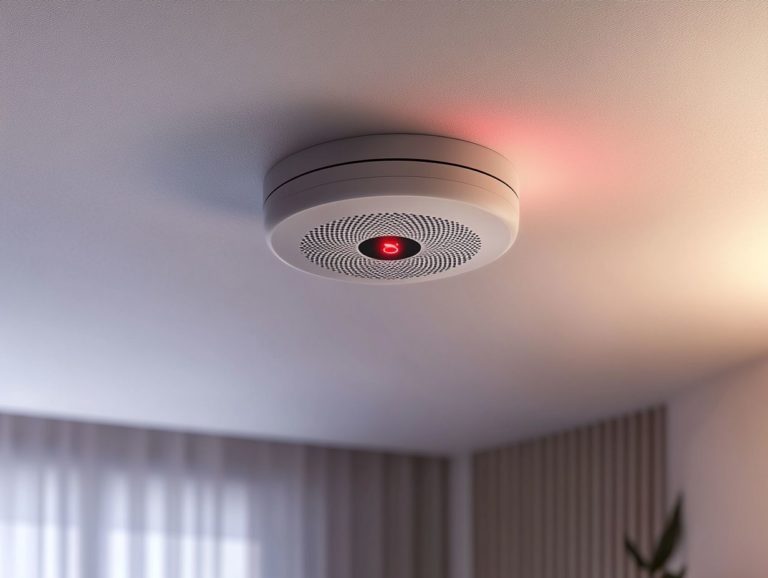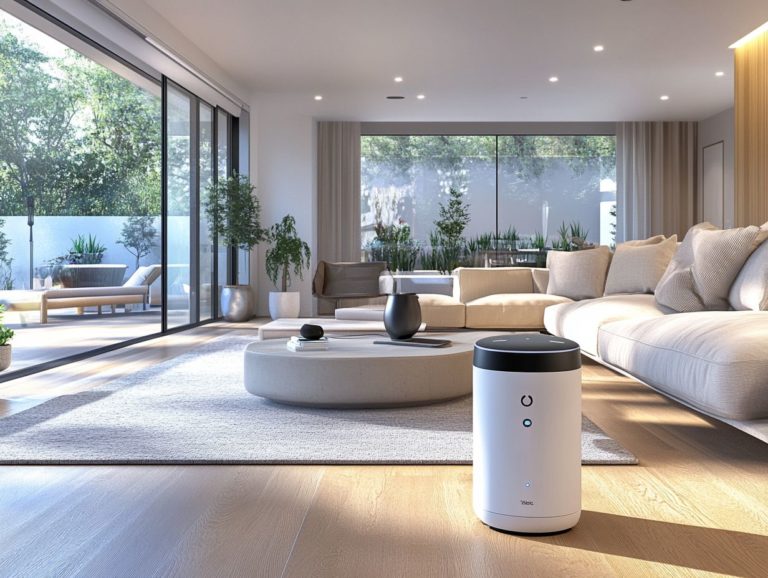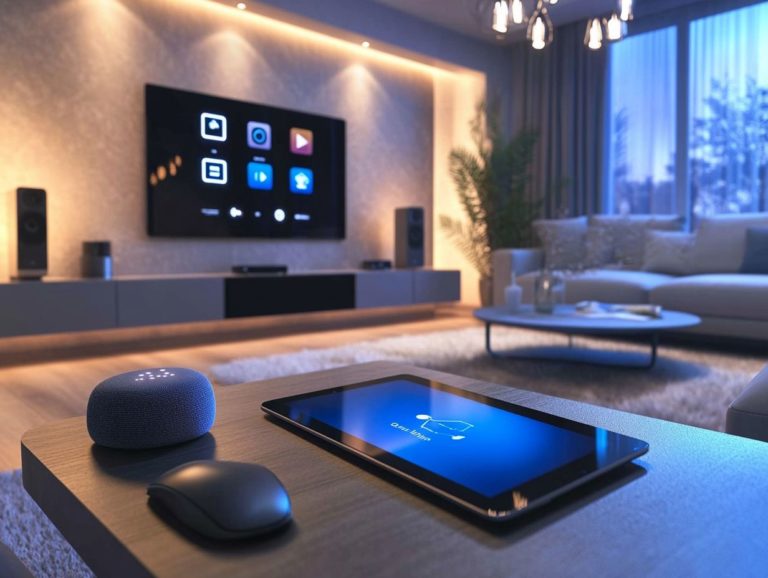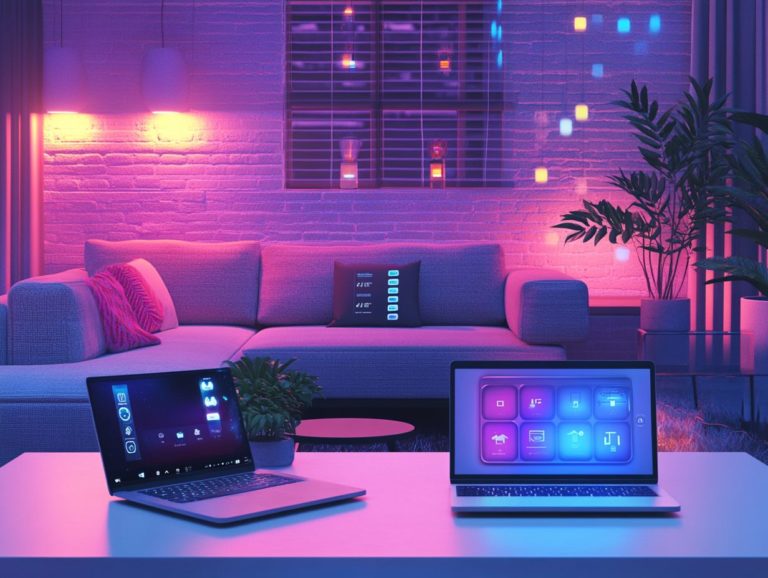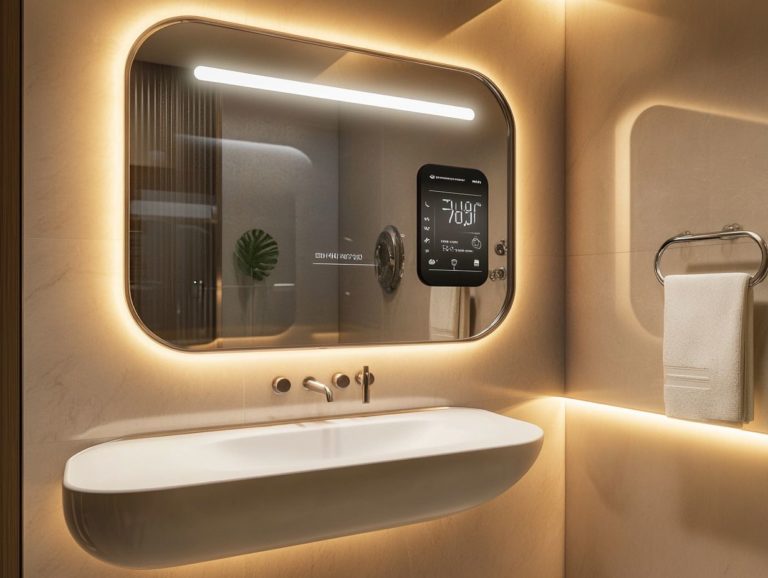How Smart Lighting Works
Smart lighting is revolutionizing the way you illuminate your spaces. It seamlessly integrates convenience, efficiency, and cutting-edge technology.
In this article, you ll explore the essential components of a smart lighting system, including sensors, controllers, and various connectivity options.
Discover the multitude of control methods available to you, such as remote access and voice activation. You’ll also enjoy benefits like improved energy efficiency and personalized settings.
We will also discuss important considerations to keep in mind before you decide to make the switch.
Contents
Key Takeaways:
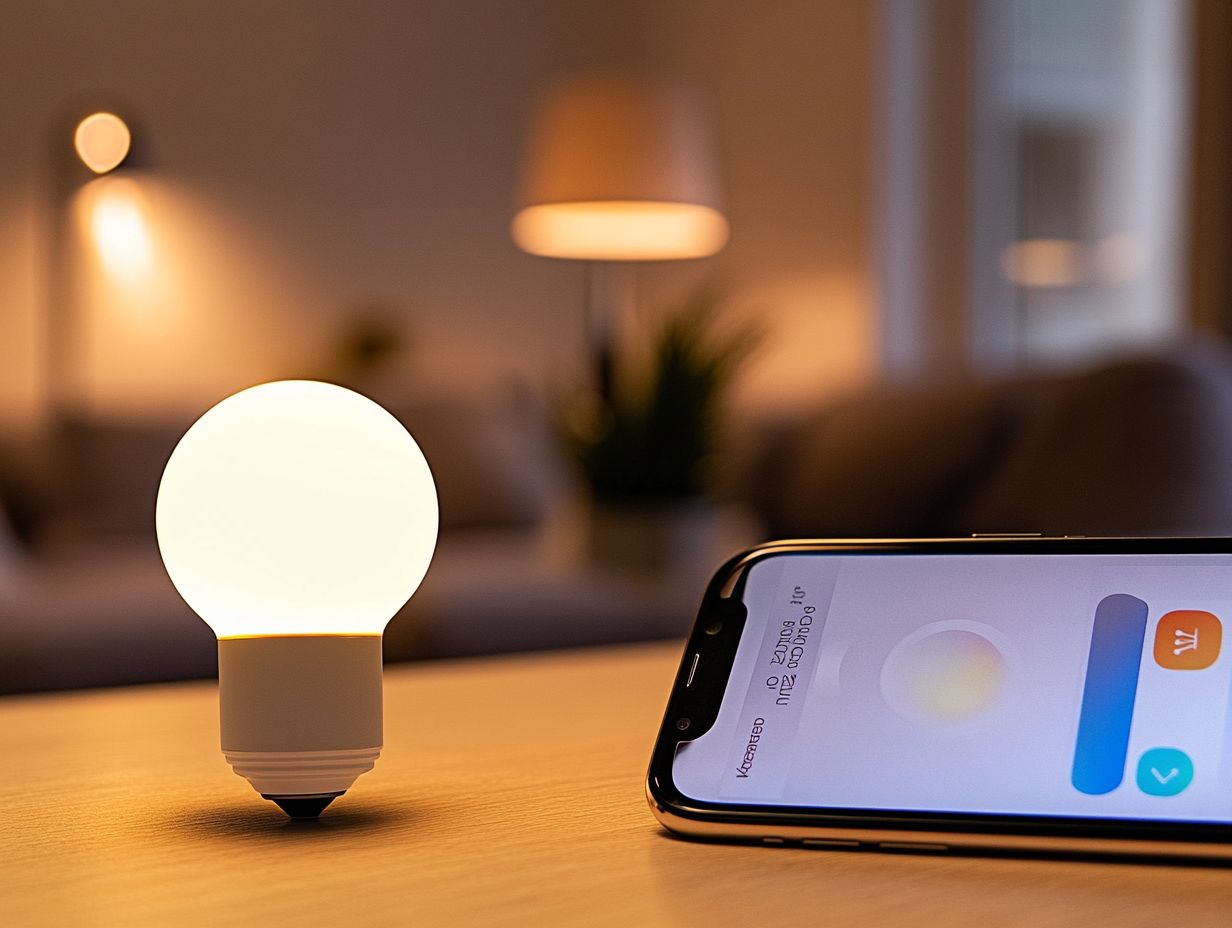
- Smart lighting systems combine sensors and controllers for user-friendly, customizable lighting.
- They can be controlled remotely or through voice commands.
- Key benefits include energy efficiency and the ability to customize lighting to fit individual needs.
Understanding Smart Lighting
Smart lighting represents advanced solutions that empower you to control your lights remotely. You can use technologies like smartphone apps, voice commands, and automation systems.
This innovation transforms traditional lighting into a highly customizable and energy-efficient experience.
With devices such as Philips Hue and smart bulbs connected to a smart device network, you can enjoy features like scheduling, light dimming, and home security enhancements through motion sensors. They also integrate seamlessly with smart home systems like Google Home and Amazon Alexa.
Your smart lighting system includes various components, such as smart switches, sensors, and hubs that work together effortlessly. These technologies elevate convenience, allowing you to adjust brightness or change colors with ease. They also significantly impact energy savings by optimizing lighting based on your needs and occupancy.
Moreover, smart lighting enhances home security. By simulating presence with automatic light activation when you re away, it provides peace of mind against potential intruders.
These smart systems transform your home lighting into a modern marvel that prioritizes efficiency, security, and user-friendly operation, making your home smarter and more comfortable.
Components of a Smart Lighting System
A sophisticated lighting system comprises several essential components that collaborate to create an intelligent and responsive lighting environment.
This includes sensors and controllers, smart bulbs, smart switches, and various connectivity options like Bluetooth, Zigbee, and Z-Wave wireless protocols that help your smart devices communicate.
This seamless integration allows for effortless interaction with other smart devices in your home automation setup, elevating your living experience to a new level.
Sensors and Controllers
Sensors and controllers play a crucial role in smart lighting systems. They enable you to automate light brightness and temperature control, enhancing energy efficiency and convenience.
Motion sensors automatically adjust lighting based on occupancy. Ambient light sensors are particularly impressive; they detect the natural light levels in a room and adjust the artificial lighting accordingly. This ensures optimal brightness while minimizing unnecessary energy consumption.
Imagine daylight streaming in while these sensors automatically dim the lights for a well-lit space without wasting electricity.
Then there are programmable controllers that allow you to set specific lighting schedules. This level of customization aligns your illumination with your daily routines. By integrating timers and dimmers, you can create personalized atmospheres that cater to relaxation or boost productivity, all while enhancing comfort and sustainability in your environment.
Connectivity and Control
The connectivity and control of smart lighting systems are crucial for an efficient smart home experience. Using wireless technology, you can manage your lighting through apps and voice commands via platforms like Google Home and Amazon Alexa, allowing you to adjust your lighting effortlessly from anywhere.
Wi-Fi ensures strong internet connectivity and remote access. Bluetooth provides simple pairing with your mobile devices for localized control.
Zigbee and Z-Wave specialize in low-energy communication. They create a mesh network that enhances connection reliability across your devices.
These technologies allow seamless integration with various smart home ecosystems. They empower you to personalize your lighting experience, adjusting brightness and colors to match your mood or occasion.
How Smart Lighting is Controlled
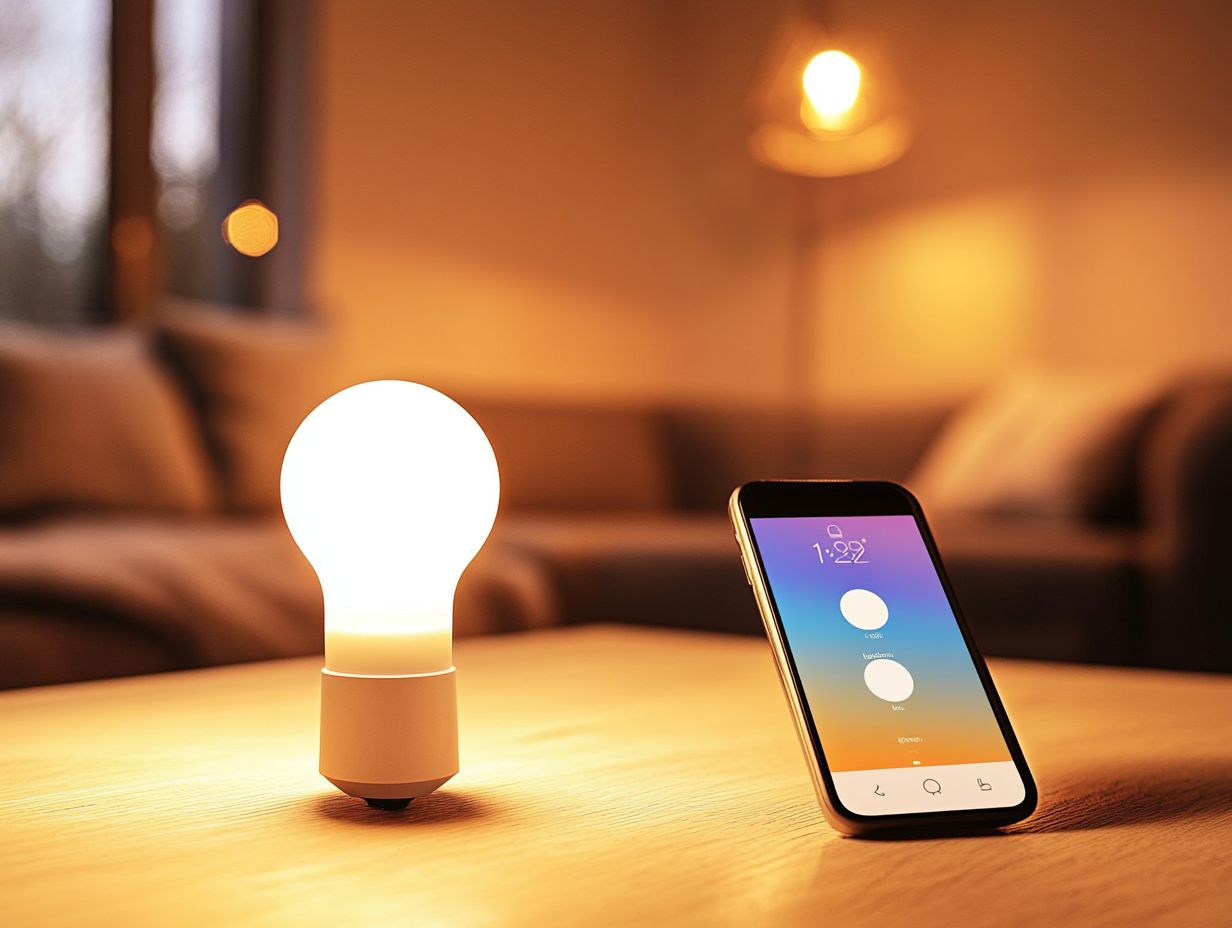
You can take charge of your smart lighting in several ways. Whether you prefer remote control through smartphone apps or voice commands using Google Home or Amazon Alexa, the options fit your lifestyle perfectly.
Remote Control
Control your smart lighting through dedicated smartphone apps. Customize your lighting preferences, schedule automated scenarios, and manage your entire home system with ease.
These apps empower you to adjust brightness levels, change color temperatures, and create unique lighting scenes for your moods or activities. You can set schedules for your lights to turn on or off at specific times, enhancing security by creating the illusion of presence.
With advanced integration into other smart devices, managing your home illumination becomes seamless through a single interface. This level of user-centric customization enhances comfort while promoting energy efficiency.
Voice Control
Voice control is a standout feature in smart lighting systems. Operate your lights with simple voice commands through Google Home and Amazon Alexa, making your home tech easier to use.
This approach simplifies your interactions with your home and boosts accessibility for those with mobility challenges. By integrating with other smart devices, voice control allows you to create a fully automated living space.
Imagine adjusting brightness and color or setting specific lighting scenes just by speaking. It s all about making everyday tasks smoother and more enjoyable.
These systems can be programmed to respond to routines, boosting energy efficiency and transforming your home’s mood. It s no wonder voice-controlled lighting is popular among tech-savvy homeowners!
Benefits of Smart Lighting
Smart lighting is a game-changer for modern homes! It elevates functionality and efficiency.
Energy efficiency translates into substantial savings on utility bills. The convenience of remote control and customization options enhances your user experience and boosts home security.
Embracing smart lighting transforms your living space into a more intelligent and cost-effective environment.
Energy Efficiency
Energy efficiency is one of the key advantages of smart lighting systems. These systems often use LED bulbs and advanced technology to significantly lower energy consumption, leading to impressive savings for you as a homeowner.
When you replace traditional light bulbs with energy-efficient LED options, you reduce wattage usage while still enjoying optimal brightness.
Smart switches offer effortless control. You can turn off lights remotely or set schedules to ensure they re only on when needed.
Thanks to automation features like motion sensors and ambient light detection, your lighting adjusts based on occupancy and the natural light around you, ensuring no energy goes to waste.
This blend of LEDs, smart switches, and automation dramatically boosts your household s energy efficiency. The result? Lower utility bills and a smaller carbon footprint.
Convenience and Customization
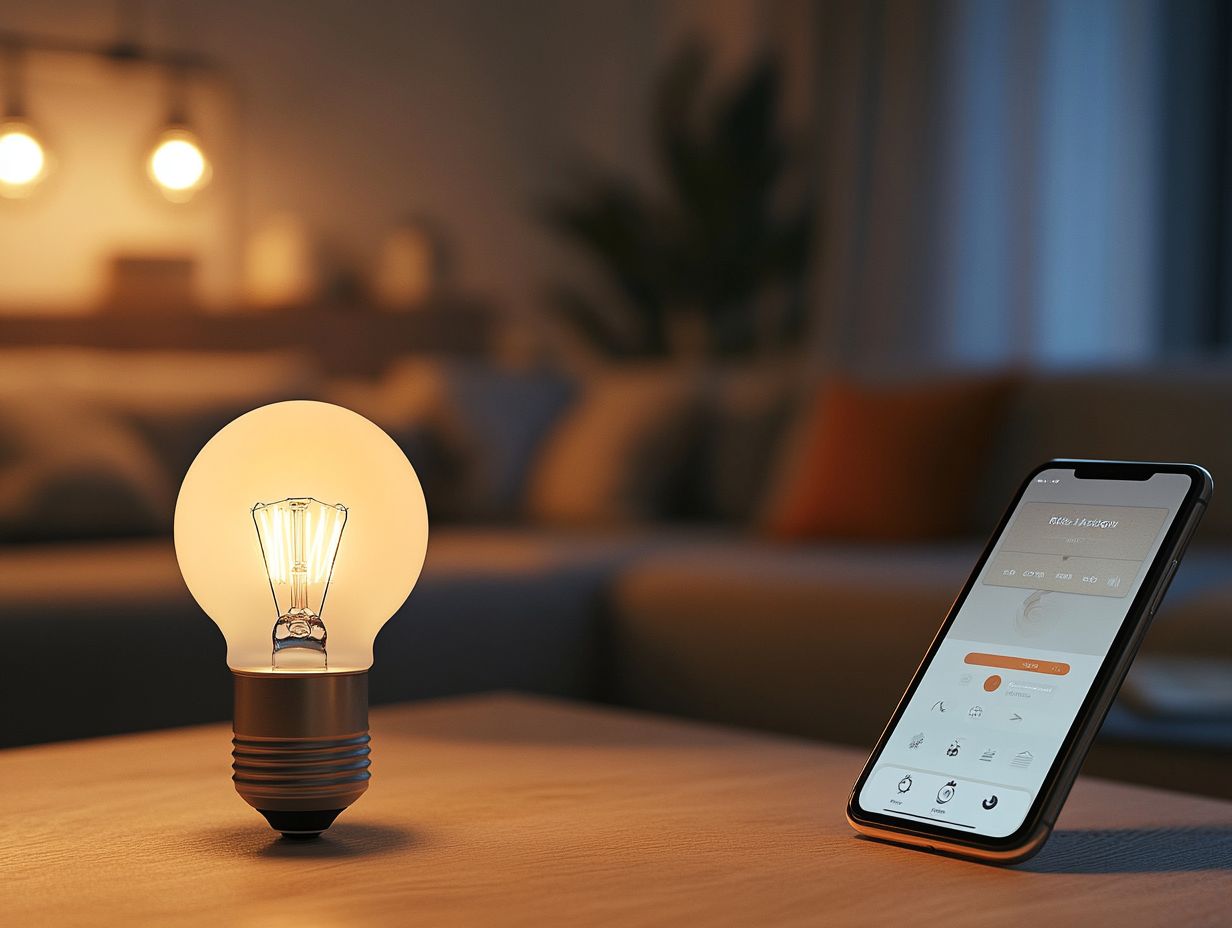
The convenience and customization of smart lighting systems are truly unparalleled. You can craft personalized lighting experiences at your fingertips.
With features like scheduling, adjustable brightness, and color temperature all accessible through smartphone apps you have the power to transform any space.
These capabilities allow you to tailor your lighting to seamlessly enhance your daily routines. Imagine scheduling your lights to gently brighten in the morning, mimicking a natural sunrise and giving you a more invigorating start to your day.
In the evening, adjust the color temperature to create a warm, relaxing atmosphere, helping you unwind after a long day.
By aligning with your preferences, smart lighting enhances the aesthetic appeal of your space and contributes to your overall well-being, making it an essential element of modern living.
Factors to Consider Before Installing Smart Lighting
Let s dive into key factors that will make your smart lighting installation a success! Before you install smart lighting systems, consider a few important factors:
- Compatibility with existing systems
- Overall cost
- Maintenance requirements
This thoughtful approach will ensure that the smart devices you choose effectively meet your needs and expectations, enhancing your living space seamlessly.
Compatibility with Existing Systems
When selecting smart lighting solutions, compatibility with your existing systems is crucial. You want to ensure that your new lighting integrates well with the smart home technology you already have in place.
This is particularly important when considering various protocols like Zigbee, Z-Wave, or Wi-Fi, as these can significantly influence overall functionality. Adapting to a new lighting setup shouldn t come at the expense of your current appliances’ performance.
To verify compatibility, consult device manuals or manufacturer specifications to ensure your existing hubs or controllers can effectively manage the new lighting features. Explore customer reviews and technology forums for valuable insights into potential integration challenges and best practices.
Cost and Maintenance
Cost and maintenance are crucial factors when investing in smart lighting systems. The initial expenses and ongoing upkeep can significantly influence the overall value and energy efficiency you’ll achieve.
Evaluate the costs of purchasing advanced fixtures and their installation against the long-term savings on your energy bills. While the upfront investment may seem daunting, the technology often results in substantial reductions in electricity usage.
Keep in mind that regular maintenance of smart lighting might involve software updates and occasional repairs, which contribute to the total cost of ownership. By analyzing these aspects, you can better appreciate the potential return on investment and make informed decisions that enhance both comfort and sustainability in your home or workplace.
Frequently Asked Questions
How does smart lighting work?
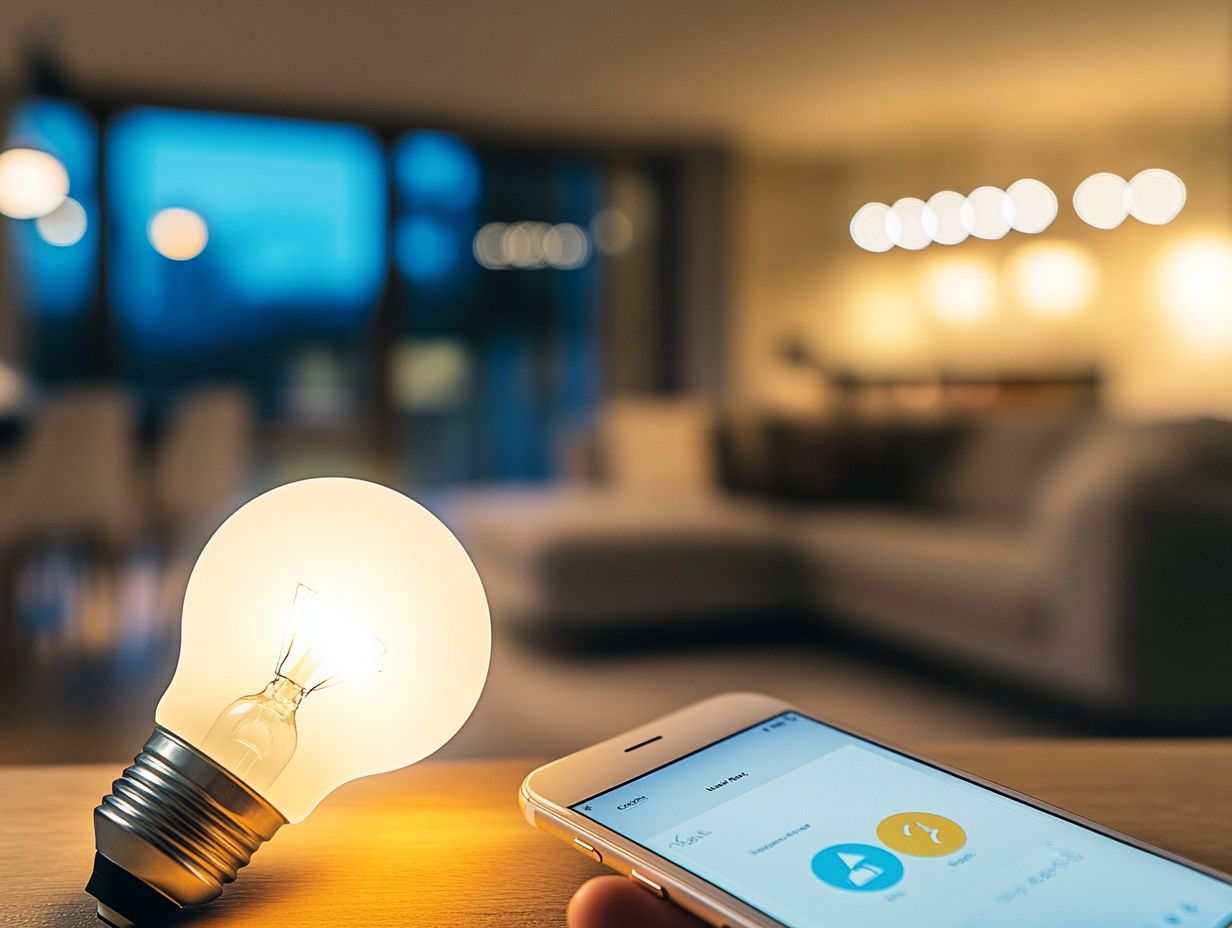
Smart lighting uses technology like sensors and wireless communication to control and adjust lights remotely. You can adjust the light levels automatically through a smartphone or voice commands.
What types of devices can be used with smart lighting?
You can use smart lighting with various devices, including light bulbs, switches, dimmers, and light strips. These devices connect to a central hub, a device that connects all your smart gadgets, enabling remote control and automation.
How is smart lighting different from traditional lighting?
Smart lighting offers more control and flexibility than traditional lighting. It allows for remote control, scheduling, and automation, making it more convenient and energy-efficient.
Smart lighting also provides options for dimming, color-changing, and personalized settings.
What are the benefits of using smart lighting?
Unlock amazing benefits with smart lighting! It saves energy, enhances convenience, and allows for customization.
You can also improve home security by controlling lights remotely and scheduling them while away. It can enhance the ambiance of your space with adjustable lighting options.
How do sensors play a role in smart lighting?
Sensors are crucial components of smart lighting systems. They detect motion, light levels, and occupancy, allowing for automatic adjustments and energy savings.
Sensors contribute to a seamless and convenient user experience.
Can smart lighting be integrated with other smart home devices?
Yes! Smart lighting can integrate with other smart home devices like thermostats, security systems, and voice assistants. This integration creates a comprehensive and unified smart home experience, where different devices work together and can be controlled through one platform.
Explore the incredible world of smart lighting today!


